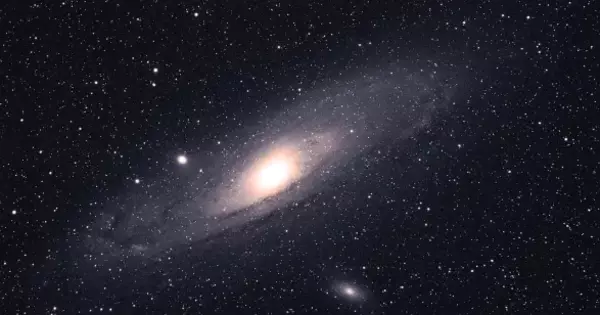Supermassive black holes with different light signatures are in different stages of their lives. According to a study led by Dartmouth researchers, black holes with varying light signatures that were thought to be the same object viewed from different angles are actually in different stages of their life cycle.
According to the researchers, the research on “active galactic nuclei,” or AGNs, definitively shows the need to revise the widely used “unified model of AGN,” which characterizes supermassive black holes as all having the same properties.
The study, published in The Astrophysical Journal, answers a long-standing space mystery and should allow researchers to develop more precise models of the universe’s evolution and how black holes form.
“These objects have perplexed researchers for over a half-century,” said Tonima Tasnim Ananna, the paper’s lead author and a postdoctoral research associate at Dartmouth. “We’ve made a lot of assumptions about the physics of these objects over time. We now know that the properties of obscured black holes differ significantly from those of AGNs that are not as well hidden.”
Supermassive black holes are believed to reside at the center of nearly all large galaxies, including the Milky Way. The objects devour galactic gas, dust and stars, and they can become heavier than small galaxies.
For decades, researchers have been interested in the light signatures of active galactic nuclei, a type of supermassive black hole that is “accreting,” or in a rapid growth stage. Beginning in the late 1980s, astronomers realized that light signatures coming from space ranging from radio wavelengths to X-rays could be attributed to AGNs. It was assumed that the objects usually had a doughnut-shaped ring — or “torus” — of gas and dust around them. The different brightness and colors associated with the objects were thought to be the result of the angle from which they were being observed and how much of the torus was obscuring the view.
We’ve made a lot of assumptions about the physics of these objects over time. We now know that the properties of obscured black holes differ significantly from those of AGNs that are not as well hidden. The new research focuses on how quickly black holes consume space matter, also known as their accretion rates.
Tonima Tasnim Ananna
As a result of this, the unified theory of AGNs became widely accepted. According to the theory, when a black hole is viewed through its torus, it should appear faint. It should be visible when viewed from below or above the ring. However, the current study claims that previous research relied too heavily on data from less obscured objects, resulting in skewed research results.
The new research focuses on how quickly black holes consume space matter, also known as their accretion rates. According to the findings, the accretion rate of a black hole does not depend on its mass, but rather on how obscured it is by the gas and dust ring.
“This provides support for the idea that the torus structures around black holes are not all the same,” said Ryan Hickox, professor of physics and astronomy and a co-author of the study. “There is a relationship between the structure and how it is growing.”

The results show that the amount of dust and gas surrounding an AGN is directly related to how much it is feeding, confirming that there are differences between AGN populations other than orientation. When a black hole accretes rapidly, the energy blows away dust and gas. As a result, it will be less obscured and appear brighter. A less active AGN, on the other hand, is surrounded by a denser torus and appears fainter.
“Previously, it was unclear how the obscured AGN population differed from their more easily observable, unobscured counterparts,” Ananna explained. “This new study conclusively demonstrates a fundamental difference between the two populations that extends beyond viewing angle.”
The study stems from a decade-long analysis of nearby AGNs detected by Swift-BAT, a high-energy NASA X-ray telescope. The telescope allows researchers to scan the local universe to detect obscured and unobscured AGNs.
The research is the result of an international scientific collaboration — the BAT AGN Spectroscopic Survey (BASS) — that has been working over a decade to collect and analyze optical/infrared spectroscopy for AGN observed by Swift BAT.
“We have never had such a large sample of X-ray detected obscured local AGN before,” said Ananna. “This is a big win for high-energy X-ray telescopes.”
The paper builds on previous research from the AGN research team. Ananna developed a computational technique for assessing the effect of obscuring matter on observed properties of black holes for the study, and used this technique to analyze data collected by the larger research team.
Researchers can determine when most supermassive black holes underwent most of their growth by knowing a black hole’s mass and how fast it feeds, according to the paper, providing valuable information about the evolution of black holes and the universe.
“One of the most important questions in our field is where do supermassive black holes come from,” Hickox explained. “This research provides an important piece that can help us answer that question, and I anticipate that it will become a touchstone reference for this research discipline.”
Future research could concentrate on wavelengths that allow the team to search outside of the local universe. In the short term, the team wants to know what causes AGNs to enter high accretion mode and how long it takes rapidly accreting AGNs to transition from heavily obscured to unobscured.
















